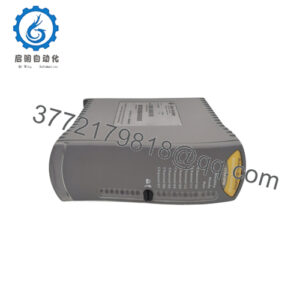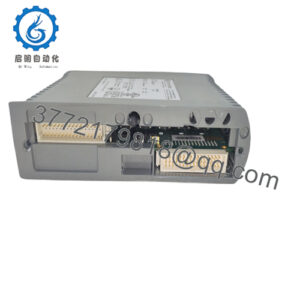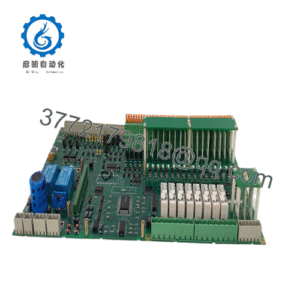Description
Product Model: MKD071B-061-KP1-KN
Product Brand: Bosch Rexroth (Indramat)
Product Series: MKD Synchronous Motor / MKD071 family
Product Features:
- 8.0 Nm continuous (standstill) torque, up to ~32 Nm peak torque
- Integrated resolver + multiturn absolute encoder feedback
- 5 Nm holding brake (24 V) for safe standstill retention
- IP65 protection, keyway shaft, compact flange design for versatile mounting
- MKD071B-061-KP1-KN
Product Role & System Fit
In an automation setup, the MKD071B-061-KP1-KN is a servo motor — the actuator converting electrical commands into precise mechanical motion. But calling it “just a motor” is underselling its sophistication. It is a permanent magnet, 3-phase synchronous motor with integrated feedback (resolver + absolute encoder), designed to operate in high-precision control loops.
You’ll typically see it paired with a matching servo drive (for example, a Rexroth ECODRIVE or DKC/DRC series) that supports the feedback interface and the voltage/current envelope of the motor. The motor sits downstream of the drive and feedback loop: the controller sends voltage pulses, the motor produces torque, and the encoder/resolver reports position/velocity back.
Because MKD071B-061-KP1-KN provides both an absolute multiturn encoder and resolver, it is highly flexible: the drive can use the resolver for fast control loops, and fallback or higher-level systems can reference the absolute value after power cycles. That dual feedback capability helps when restarting systems or in safety-critical axes.
In multi-axis machines (e.g. gantries, pick-&-place, indexing tables), this motor’s torque and speed envelope make it suitable for moderate loads without oversizing. Its design allows users to reuse or swap motors among axes with minimal rewiring — as long as the drive supports the same feedback scheme and voltage class.
One caveat: because feedback wiring, shielding, and connector compatibility are crucial, mismatches often cause faults or noise. Always match the original Rexroth wiring (power + encoder + temperature + brake lines) when integrating MKD071B-061-KP1-KN into a system. The product’s spec sheets specify connector pinouts and cable cross-sections accordingly.
In essence, this motor bridges the “control command” domain and the mechanical load. It’s well suited to systems that demand clean, repeatable motion, such as printing axes, machine tooling, or handling devices.
Technical Specifications Table
Below is a summarized spec sheet. Use this as a quick reference — always verify against the nameplate or official manual in your specific installation.
| Parameter | Value / Range | |
|---|---|---|
| Model | MKD071B-061-KP1-KN | |
| Motor type | 3-phase synchronous permanent magnet | |
| Continuous torque (standstill) | ~8.0 Nm | |
| Peak / theoretical torque | ~32 Nm | |
| Holding brake torque | 5 Nm | |
| Brake voltage / current | 24 V DC / ~0.56 A (typical) | |
| Encoder / Feedback | Resolver + multiturn absolute encoder | |
| Protection class | IP65 | |
| Frame / flange | 115 mm flange, 95 mm centering diameter | |
| Shaft | Keyway shaft (DIN 6885 recommended feather key) | |
| Speed range | Up to ~6000 rpm (depending on winding) | |
| Thermal time constant | ~45 minutes (typical) | |
| Inertia | ~0.72 × 10⁻⁴ kg·m² (for brake option) | |
| Weight (brake version) | ~0.62 kg (motor + brake mass) |
This table gives a clear snapshot; when designing your system, also refer to the torque-speed curves, derating charts, and environmental limits from the Rexroth MKD manuals.
Applications & Industry Context
In real-world settings, MKD071B-061-KP1-KN finds use in environments demanding precision, dynamic response, and compact size. Let me share contexts where it’s proven beneficial.
In printing and converting machinery, where registration tolerances and web stability are critical, this motor is often used for tension control axes or web alignment. Its consistent torque at low speed and accurate encoder feedback helps stabilize processes.
In packaging and labeling lines, the motor drives small indexing platens, label heads, or pick arms. The holding brake is a valuable safety measure: when power is cut, the 5 Nm brake prevents drift, helping to lock parts in place until the system is brought to a safe state.
Assembly automation, robotics, and pick-and-place often require motors that balance responsiveness and torque. The MKD071B-061-KP1-KN’s dual feedback enables both coarse motion control (via resolver) and safe, absolute referencing (after power cycles) — a combination frequently sought in robotics axes or high-speed gantries.
Even in retrofits or legacy installations, this motor remains a favorite: many older Rexroth systems used MKD series motors, so the MKD071B-061-KP1-KN can drop into existing wiring layouts, sharing flanges and feedback paths. In one factory I visited, they replaced a burned-out MKD071B motor using a remanufactured MKD071B-061-KP1-KN with minimal downtime, reusing the original cable harness and drive settings.
In environments where washdown or dust exposure is common (e.g. food processing or light chemical plants), the IP65 rating helps—but you’ll still want protective covers or enclosures. The motor’s sealed design gives a buffer, but for longevity, protecting connections and venting is wise.
From test laboratories to motion simulators, this motor also works well where space is limited and side loads or mounting orientation vary — its compact profile and stiff shaft let it tolerate flexible integration.
Because of its moderate power class, it’s not ideal for heavy spindles or high-inertia loads. But where high precision and moderate torque are needed, MKD071B-061-KP1-KN often hits the sweet spot.
Technical Features & Benefits
Let’s dive into what makes MKD071B-061-KP1-KN stand out, not just in specs but in field performance and design.
Feedback Flexibility
One of the strongest selling points is the combination of resolver and multiturn absolute encoder. The resolver provides a robust, high-frequency feedback signal well-suited for servo loops. Meanwhile, the absolute encoder ensures that upon power-up, the system knows its exact position (over multiple turns), reducing the need for homing routines. This dual-feedback architecture is particularly valuable in machines where homing sequences cost cycle time or risk collisions.
Holding Brake Functionality
The integrated 5 Nm holding brake adds mechanical safety during power-offs. In vertical or sloped axes, gravity can cause uncontrolled drifting; the brake mitigates this. The brake is actuated via 24 V DC (typical), and its design is compactly incorporated without excessively increasing rotor inertia.
Excellent Thermal Behavior
Despite modest power ratings, the motor’s thermal time constant (~45 minutes) gives it resilience against short bursts, overshoot, or transient loads without overheating immediately. Also, options for surface cooling or blowers are available in the MKD line if higher performance or ambient derating is needed.
Compact & Rigid Construction
The MKD071B frame (flange 115 mm, centering diameter 95 mm) is designed for stiffness and compatibility with many machine frames. The keyway shaft supports positive torque transfer, especially under high dynamic loads. Its robust construction supports high radial and axial loads (within spec) and holds alignment even under vibration.
Field Proven & Serviceable
Because MKD-series motors have been in production (and legacy systems) for many years, spare parts, reman services, and repair knowledge are available. That continuity reduces risk—if a unit fails, repair rather than full replacement often suffices. Also, because the motor design hasn’t changed drastically across variants, field technicians can sometimes reuse mounts or motor cables when upgrading or replacing.
Consistent Performance Across Speeds
Through its winding code (061), this motor is optimized to deliver usable torque across a broad speed band — from low-speed, high-torque positions, up to higher RPMs in lighter loads. The standard torque-speed curves show a relatively flat plateau (in the continuous region) before drop-off (per MKD documentation)
These features, combined with the reliability of Rexroth/Indramat engineering, give the MKD071B-061-KP1-KN a strong value proposition in precision motion applications.
Installation & Maintenance Insights
Installing or maintaining MKD071B-061-KP1-KN requires attention to a few practical matters that engineers sometimes overlook.
Mounting & Orientation
Mount the motor using correct flange and centering dimensions (115 mm flange, 95 mm centering diameter) to ensure runout tolerances. Avoid misalignment when coupling; slight angular or parallel error can accelerate bearing or shaft fatigue. Use a properly sized feather key (DIN 6885 spec) aligned with the keyway.
Because this is not a ventilated motor (unless optional blowers are used), ensure free convection around it. Avoid placing heat sources or insulating materials too close. If your ambient temperature is high, consider derating or forced-air cooling.
Feedback & Wiring
Use shielded encoder cable(s) for resolver and absolute encoder lines, and maintain correct grounding per Rexroth manuals. Avoid routing power conductors and signal wires in close proximity to prevent electromagnetic noise coupling. Keep cable lengths within recommended limits to minimize signal degradation.
Verify connector pinouts and mating before final wiring. Always check that the resolver, encoder, temperature sensor, brake, and power leads are correctly mapped. Miswiring feedback can lead to immediate faults or unstable servo behavior.
First Commissioning
Bring the axis up slowly: ramp in torque and speed while watching drive fault logs, motor temperature, and current draw. Confirm the correct orientation (CW vs CCW), feedback scaling, and motor parameterization. Use minimal load initially to validate behavior.
In many machines, you’ll need to tune the servo loop (gain, damping) for your specific load, inertia, and stiffness. Because MKD071B-061-KP1-KN has known inertial properties from its datasheet (e.g. ~0.72 × 10⁻⁴ kg·m²) , you can seed initial tuning values more confidently.
Preventive Maintenance
Periodically inspect connections (tightness, corrosion), clean any dust around cooling zones or enclosures, and monitor bearing vibration signatures. In a clean, dry environment, the motor can last many years with minimal intervention.
If the holding brake is present, test its operation (release and engage) under load occasionally, since a stuck brake can lead to unexpected behavior. Also check for brake coil current draw.
When end-of-life or failure occurs, consider sending the motor for repair or reman through authorized Rexroth/Indramat service. Because many facilities stock spare MKD units, having a spare motor in inventory can dramatically reduce downtime.
In field swaps, preserve the original feedback and parameter files. Since the encoder mapping and calibration matter, carrying over those settings ensures that the replacement motor doesn’t require a lengthy relearning or calibration process.



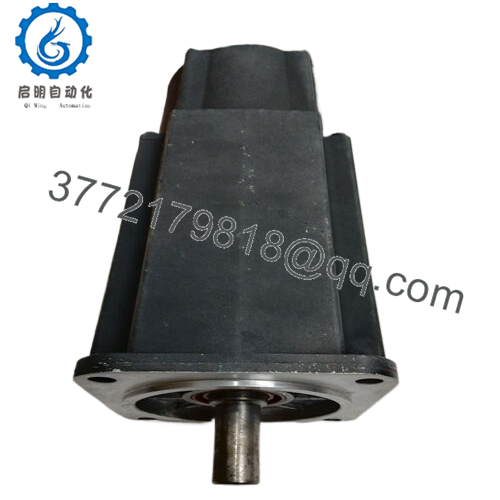

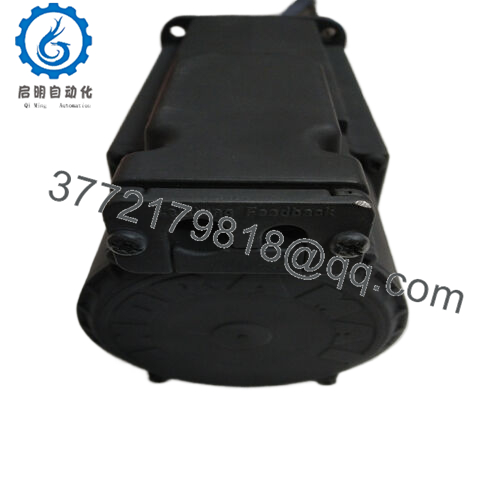
 WhatsApp: +86 16626708626
WhatsApp: +86 16626708626 Email:
Email:  Phone: +86 16626708626
Phone: +86 16626708626